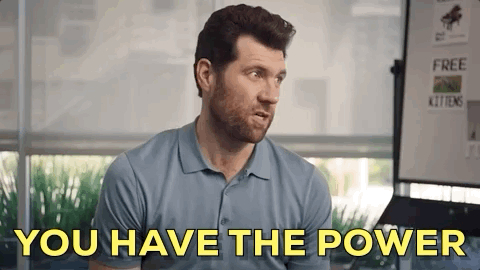By now, many of our institutions have temporarily suspended on-campus operations, and a majority of institutional resources have been allocated to properly transitioning students, staff, and faculty to online learning.
As student affairs professionals, many of our positions are also transitioning online. In order to continue doing our jobs effectively, we have to make numerous changes, including conducting one-on-one meetings virtually.
Fortunately, I‘ve found that virtual one-on-one meetings can be quite rewarding and sometimes even more accessible than traditional in-person meetings.

I recently completed over 150 one-on-one academic advising meetings with students. Here are some considerations for making your transition to online meetings rewarding based on what I’ve discovered.
5 Tips
1. Build rapport

Switching to virtual meetings could be a difficult adjustment for some students. The new meeting style might make them tense, less talkative, or self-conscious. Additionally, their anxieties might be higher than usual as they deal with stressors related to family, friends, and life in general.
For these reasons, it’s important to go out of your way to build online rapport with students, even those with whom you have a good in-person relationship. You can do so in a few ways:
- Let students know that this is also a transition for you and indicate that you’re receptive to feedback about what would make the meetings more comfortable and productive.
- Acknowledge that meeting virtually is different than meeting in-person, but also assure students that you’re still available and accessible.
- Don’t shy away from small talk. If you feel comfortable, and it is appropriate to do so, use humor to lighten the mood.
- Ask students how they are doing and make sure they know that it’s fine to not be okay. Actively listen to them and express empathy.
- Find out how they’re taking care of themselves mentally and physically, and encourage them to do so or continue doing so. Don’t forget to share your self-care routine as well. You are human and are experiencing many of the same things your students are facing. It might benefit them to see how you’re processing change.
2. Prioritize positive and welcoming body language, tone, and presentation
When you aren’t in the same room as someone, your body language, tone, and habits may differ from usual. Here are some things to be cognizant of:
- Make sure there’s enough light in the room and that your background isn’t cluttered. You want your students to be able to clearly see and focus on you.
- It’s easy to slouch or involuntarily seem disinterested. Be aware of the movement and placement of your arms and legs by sitting up straight with your feet on the floor and not crossing your arms. You can find other good tips about body language here.
- It’s fairly easy to make eye contact in person. But in video calls, you’ll need to look at your camera to make eye contact. This can be tricky so practice with a colleague or friend.
- Think about the speed and tone of your voice. It can be difficult to hear someone well virtually, so you’ll want to enunciate and speak slightly slower. Be patient and prepared to repeat yourself without exuding frustration.
- It can be hard to focus during virtual interactions and easy to attempt to multitask. Try to avoid distractions on screen and off so that you can focus on the person on the other side of the camera. This can include closing web browsers you aren’t using, turning off the television, putting your pets in another room, and putting phones and other electronics away.
3. Have a plan and guide the conversation
If you’re like me, it can be harder to follow speaking cues during online meetings versus in-person meetings. You might accidentally interrupt the other person on the call or end up speaking at the same time. Conversations may not flow easily, and students don’t always know where to start.
This is why I try to have a plan to guide my conversations.
As I begin my meetings, I make an effort to build rapport with the student, asking questions about how they’re doing and feeling. After I pose each question and they respond, I wait a few seconds after they appear to be done to ensure that they’re fully finished. I sometimes even mute myself so that I’m not tempted to interrupt or provide feedback too early.
Next, I ask students where they want the conversation to go and if they’d like me to start by asking questions or if they have their own questions or comments. This allows me to adjust my mindset to know if I’m going to primarily focus on initially listening or on initially speaking. It also gives the student agency within the conversation.

If students have their questions to start off, I relinquish some control of the conversation and let them take it where they wish to go. I utilize the mute button and pay attention until they’ve finished asking their questions. I usually keep a notebook nearby so that I can write their questions and any follow-up questions that I have down.
If students want me to start, I focus on open-ended questions that require substantive answers. For instance, in my academic advising sessions with law students, many students have told me that they have no idea what they’re doing when it comes to course scheduling. So, I ask reflecting questions like “What kind of law are you interested in pursuing, and why?” or “What was your favorite class this semester or last, and what made it so appealing?”
4. Focus on the ending
Endings are super important for virtual one-on-one meetings. Proximity is different for in-person meetings versus virtual ones. When meeting in person, students can come back if they forget something or they can drop by on a whim. Virtual meetings require a different kind of effort and more direct intentions.
So, before you end a virtual meeting, summarize the conversation. Make sure the student feels comfortable with everything you’ve discussed and with the plan for moving forward. Make it explicitly clear that they can reach out to you again and how — whether through email, phone, an app, or another method.
If you have time, you can send a follow-up email with details on how to arrange a follow-up meeting. Alternatively, you can create a survey asking students if they’ve had all their questions answered and if they felt comfortable with the meeting. If the answer is negative or neutral, you can take the initiative to set up another virtual meeting.
5. Consider Accessibility
Further, we should also think about how virtual meetings can make one-on-one meetings more accessible to students.
Virtual meetings can be helpful year-round for students who have to work, balance family obligations, travel far to campus or have transportation issues, or have other obligations that might prevent them from appearing in person. Virtual meetings can also be great for group meetings when every student can’t be in one place.
Video conferencing tools like Zoom are also accessible (albeit not perfectly so) for students with some specific needs. Through video conferencing, you can provide screen reading support, keyboard accessibility, closed caption, transcripts, and more.
The COVID-19 pandemic has forced us to transition from in-person to virtual meetings quickly. Many of us are in student-facing roles, which means that our meetings will not stop just because we’ve transitioned to virtual learning. We’ve had to adjust while providing a service that so many students need.
Even when we return to in-person meetings, virtual meetings will likely be here to stay.

By incorporating these five considerations into our virtual meetings, we can help create an atmosphere that closely mirrors the positive attributes of the in-person experience while providing even greater access to students.

What tricks and tips do you have for virtual one-on-one meetings? We’d love to hear from you at @themoderncampus and @MarceliusB.





